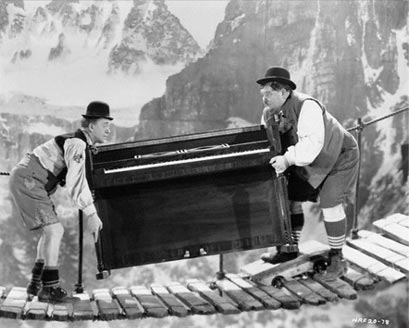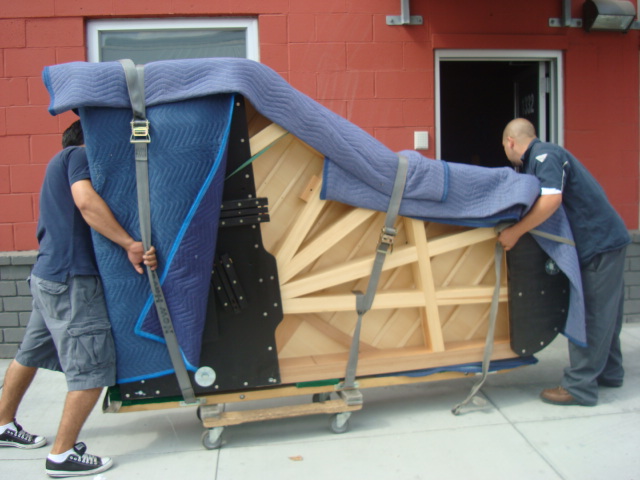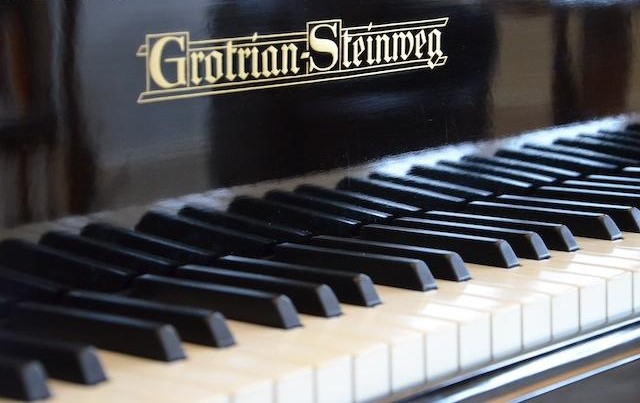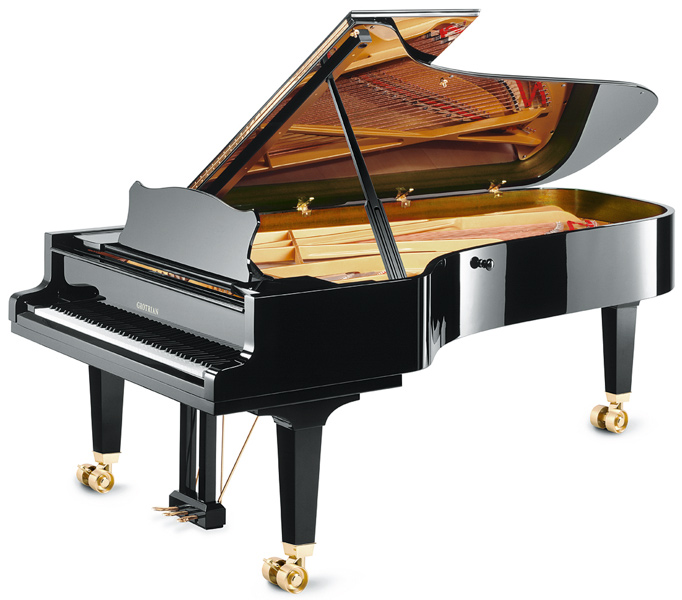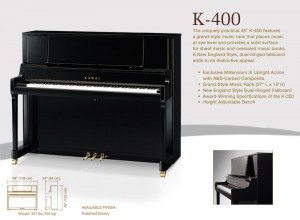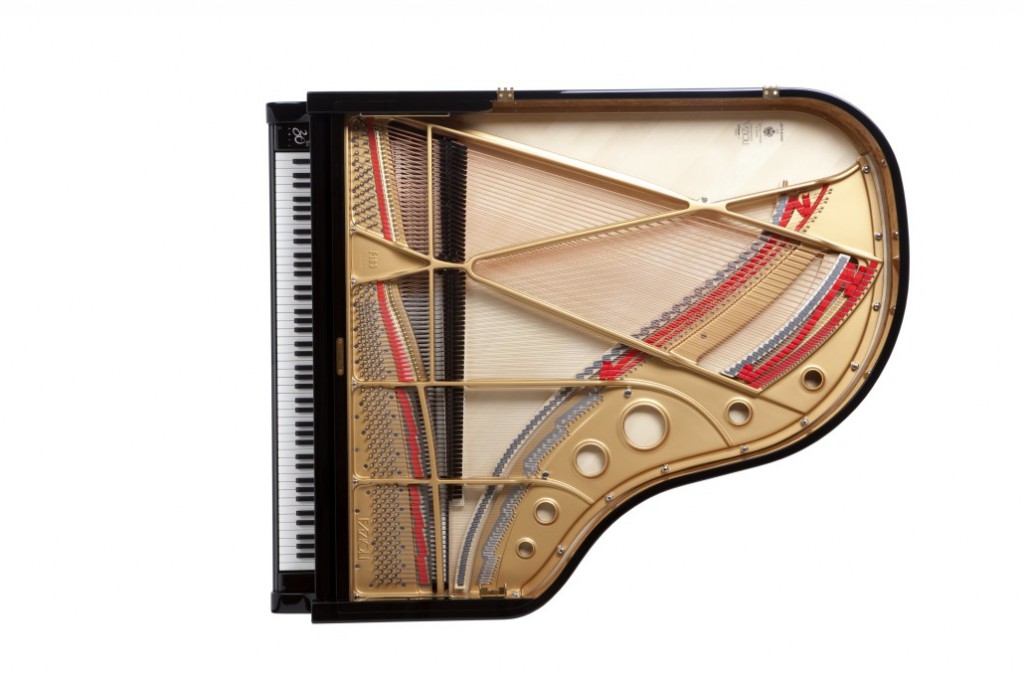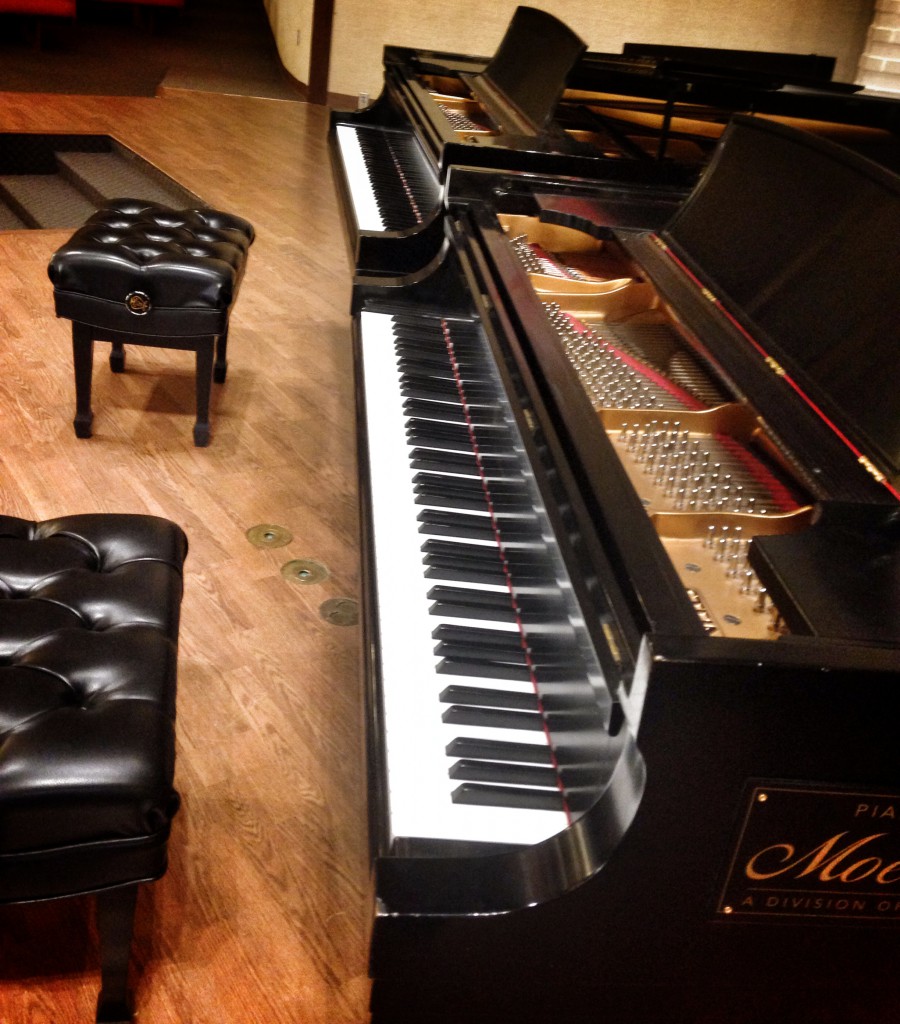One of the main things I do for Portland Piano Company is refurbish used pianos that come in before PPC resells them. My goal is to get them playing and sounding their best. I usually spend 4-6 hours cleaning, repairing, regulating, voicing and tuning. I aim to get the piano as close as I can to “new” without starting to replace parts and “rebuild” the piano.
I’m now offering this service package to customers in their homes at a considerable savings. If your piano hasn’t been tuned or worked on in several years, or if it has some oddities or issues that haven’t been resolved in normal tuning visits, or if you want to give your piano the ultimate “piano spa” treatment, this extensive service visit might be a great way to get your piano back to playing and sounding its very best!
I set aside an entire day for this service and charge between $350 (if it takes less than 5 hours) and $450 (if it takes more than 5).
In a nutshell this service includes:
1. Cleaning
2. Action Regulation
3. Basic Repairs
4. Hammer Shaping & Maintenance
5. Case Touch Up
6. Tuning & Voicing
I recently bought an upright to do my teaching on and documented most of the process. Below are lots of pictures and concise descriptions of the normal steps I take when refurbishing an upright.
I begin by taking the piano apart. This means taking off all the case parts and removing the action and keys before vacuuming and cleaning the interior of the piano.

I usually find mostly dust and dirt from years of use, but there have also been pencils, stickers, magazines, toys, pictures, letters, coins, and sometimes even dead rodents! (Eww) Here I found dirt and a comb… Removing dirt and foreign objects helps avoid keys sticking and making clicking noises. There have been many times I’ve opened up a piano to fix a sticking key and it is just a piece of junk stuck between two keys.


Next I clean the strings and the keys. The bass strings in pianos are steel wire wound with brass. When dust and dirt gets stuck between the coils of the wound strings, it inhibits its vibration and decreases the quality of sound (makes them sound “tubby”). Cleaning the strings not only makes them look better, but makes them sound better too.
I clean the ivory or plastic keytops, then sand the sides of the keys if they are dirty.The sides of the keys are wood and as they are played over the years they collect dirt and oil from hundreds of hours of playing. They look a lot better and are cleaner when I’m done!
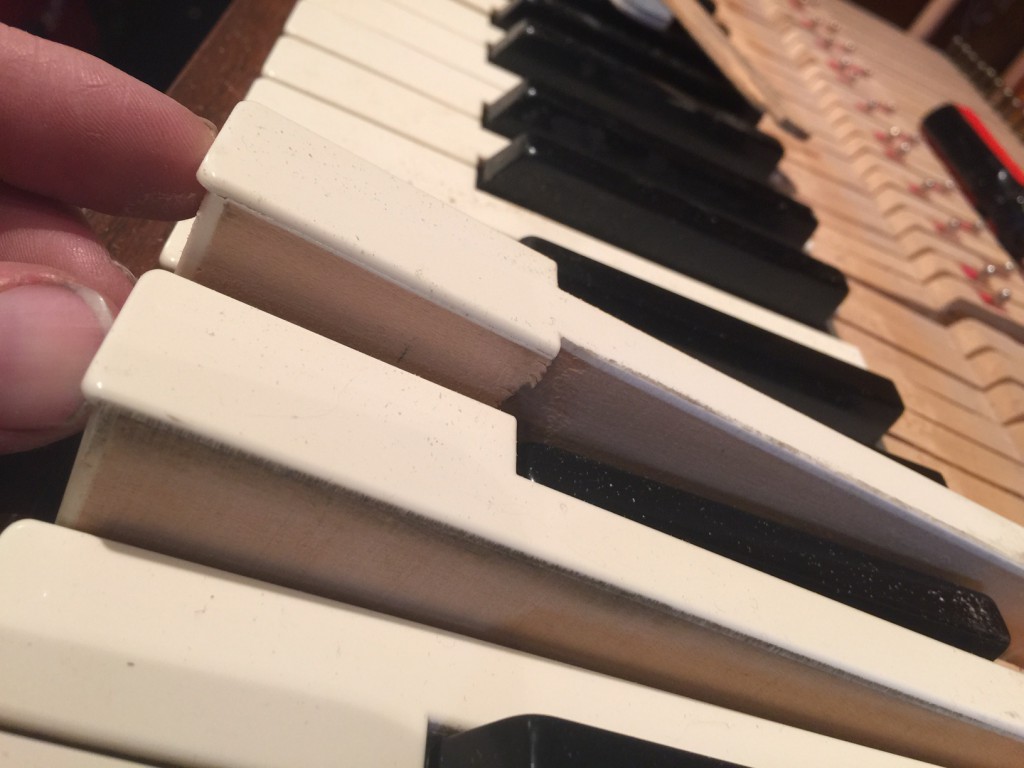
I now move from the keys to the hammers themselves. The felt hammers are what actually initiate the sound coming from your piano, so their condition makes a huge difference in your piano’s tone. After years of playing, the felt hammers will develop grooves where they strike the string, and eventually even flatten out from their original rounded shape. Using sandpaper I carefully take off layers of felt until the original rounded shape of the hammer is restored. This changes the surface area that comes into contact with the string and improves the quality of tone and the length of sustain. You can read more on this process in a previous post.
This is a large part of the job and can easily take two hours or more if there is a lot of wear on the hammers.

Next I ease and space the keys. Piano keys sit on a “balance rail pin” (the middle of the teeter-totter), and the “front rail pin.” The wood and felt around either metal pin can get tight and/or dirty which adds friction and slows down the piano action, making it harder to play the key and slower to return to place when released. If the keys have become wobbly, the felt might be worn out. If it has to be replaced, I consider it a separate job.

I also straighten and space the keys evenly so there is no gaps between keys or keys rubbing together.

The keys get still more attention! They have to be carefully leveled so each is at the exact same height, and the the “key dip” (how far the key depresses before stopping) has to be set. These are set by putting paper and cardboard punchings of different thicknesses under the key at the balance rail and front rail.
You can see some of these keys (below) need to be raised a little. Having all the keys level and responding the same when playing is essential for real control when playing the piano.

I finally move to the back of the key and adjust the “capstans,” an adjustable metal post which connects the key to the main part of the piano action (whippen and hammer). If this metal post is too low, the hammer will not begin to move right away when the key is depressed, giving a sloppy feel to the action. If the capstan is too high, it will not let all the moving parts reset when the key is let go, and it won’t be ready to play again on the next depression of the key. This makes a huge different on how your piano action feels.
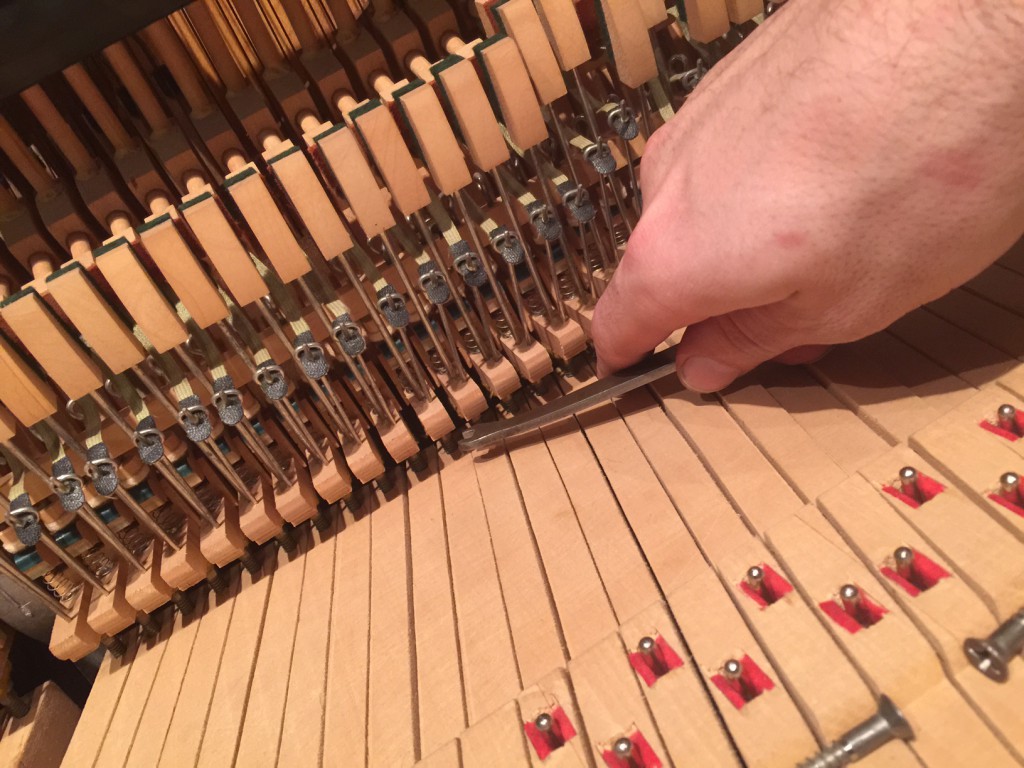
Next I set “let-off.” An essential part of the piano’s action is the “escapement mechanism.” When a key is depressed, it throws the hammer forward towards the string. At the last millisecond, the “jack,” which pushes the hammer forward, stops pushing so that it flies freely towards the string and can bounce off. The string can then vibrate freely. If the jack trips too late, it will push the hard felt hammer right into the string, keeping it from vibrating at all. You will get just a “blat.” No note. It’s like pushing your finger against a guitar string. If the jack trips too soon, the hammer will never reach the string when you play the note softly. Setting the let-off gives you much more dynamic control of your piano.
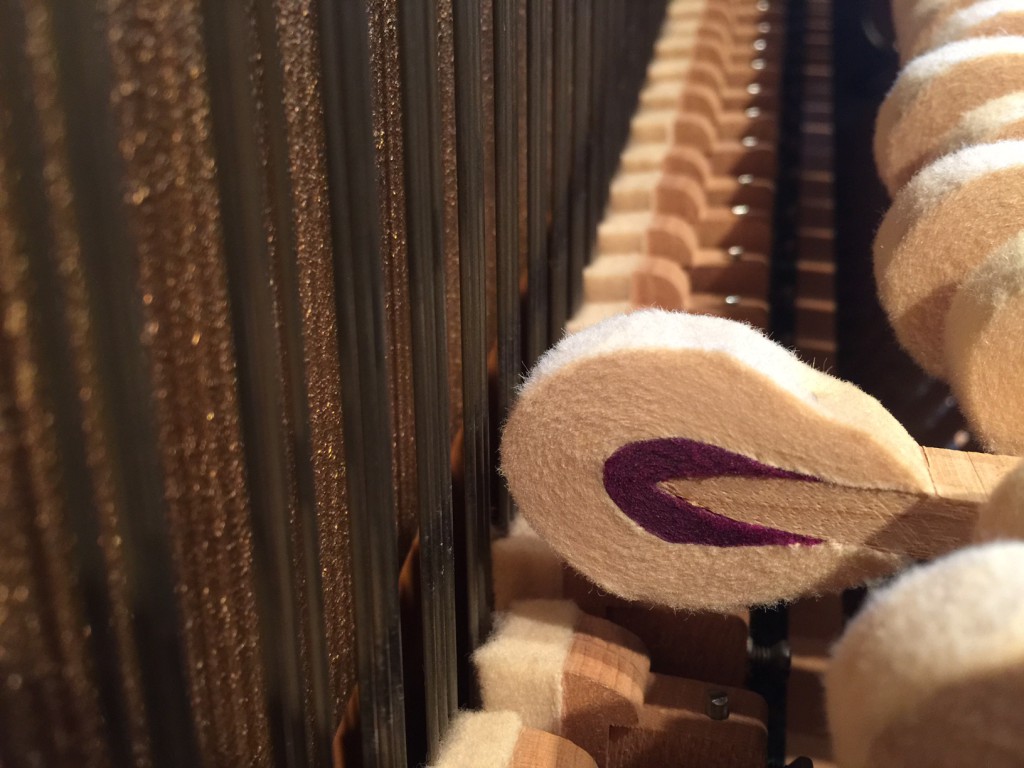
The last part of regulating the action is setting the “hammer checking.” I regulate how far the hammer is able to bounce back when the note is struck. If it bounces too far back, the note will not repeat quickly. If set too close, it could block the hammer against the string on a strong blow.
Each “backcheck” is on a metal wire that has to be bent to the correct position.

These hammers are all checking evenly and at the correct distance.

At this point, the piano plays well and I will spend some time on the outside of the piano. I first clean the case parts, then touch up any small chips or scratches that I can. (This is basic touch up. There are several men in Portland that do piano case repair full time. I do small touch up, and not major miracles. The bench in the picture below had been chewed on by a dog. I made it look better, but not perfect.)

I will touch up the wood finish on the bench as well as tighten the leg bolts. I also polish any brass pedals, locks, keyholes and knobs that can be shined up.
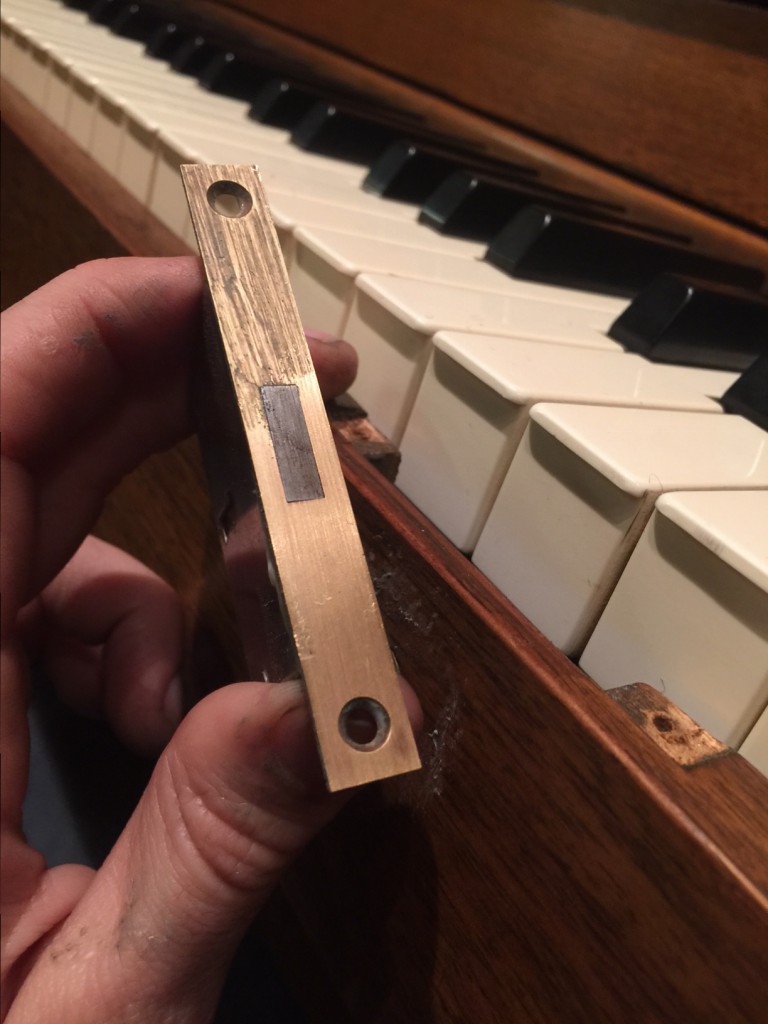
When the piano case and bench look their best, I finally get to tune the piano! This includes a pitch raise if necessary (if the piano hasn’t been tuned for a long time or has been through drastic climate changes.)

After the piano is finely tuned, I voice the hammers so each produces the same quality of tone. Often some notes will stick out as really bright and noisy, or dull and soft compared to the notes around them. Through a combination of filing and needling different areas of the felt hammer, I even out the tone production throughout the keyboard.
Last I will regulate the pedals (fixing any squeak problems) and put the case parts back on the piano. I’m finally finished. I’m impressed if you made it to this point in this blog post!
This long process will look a little different on every piano I work on, and will include necessary repairs specific to the instrument (broken or missing strings, gluing loose parts etc.).

This Complete Upright Piano Service Package usually takes about 6 hours for a well-used, but quality piano. Doing all this work in one visit saves me a lot of time in dismantling the piano and travel, and gives you as the customer more service for your money! If these various jobs were done individually, most piano technicians would charge well over $1,000.
If you know your piano needs a good bit of work, or if it has been getting a lot of use and hasn’t been worked over for a long time, this service could be very beneficial for your piano. Give me a call and I would be happy to schedule a day to come out and give your piano the deluxe treatment.
Please note that this service is for upright pianos. I am not currently offering this type of one-visit service for grands.
